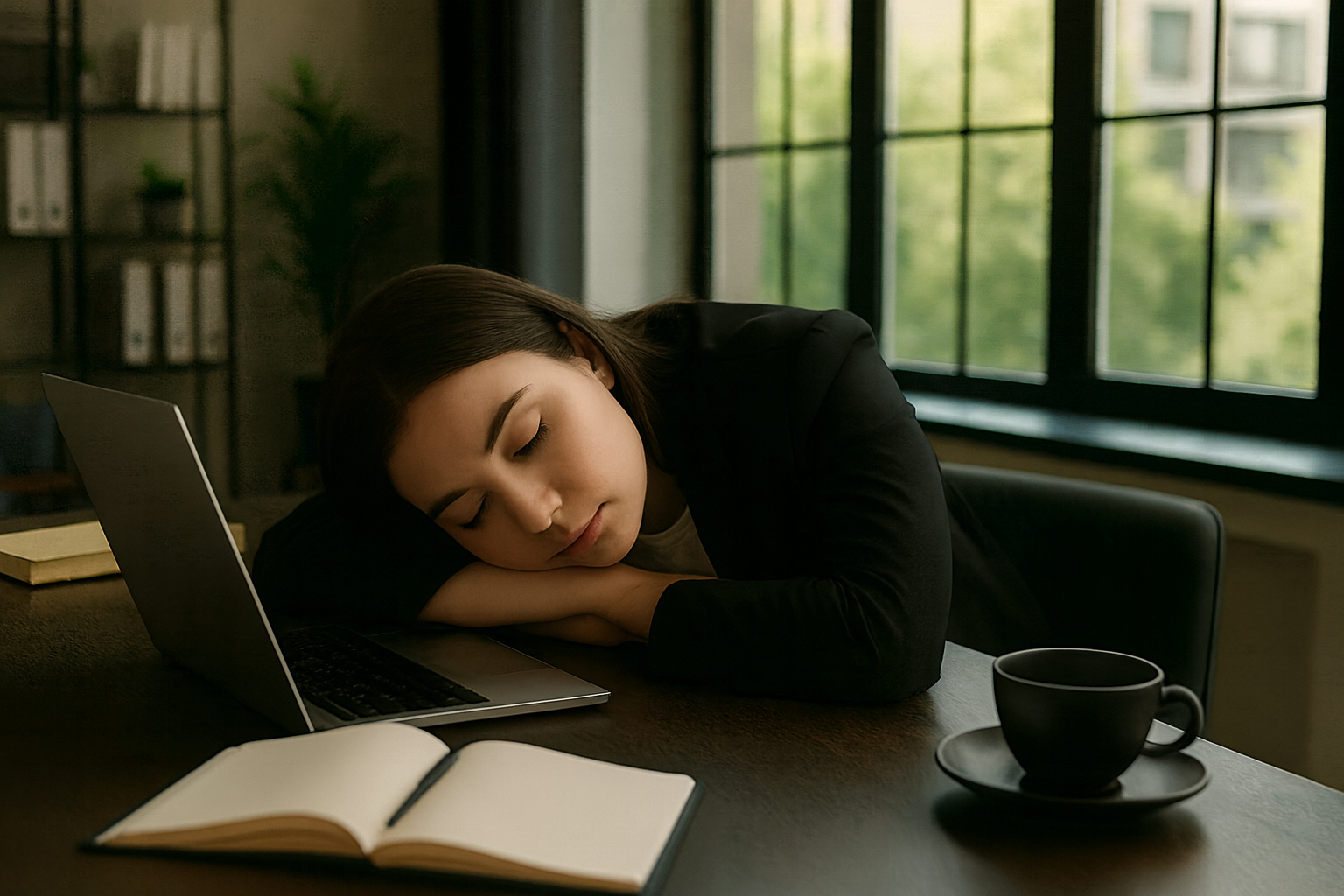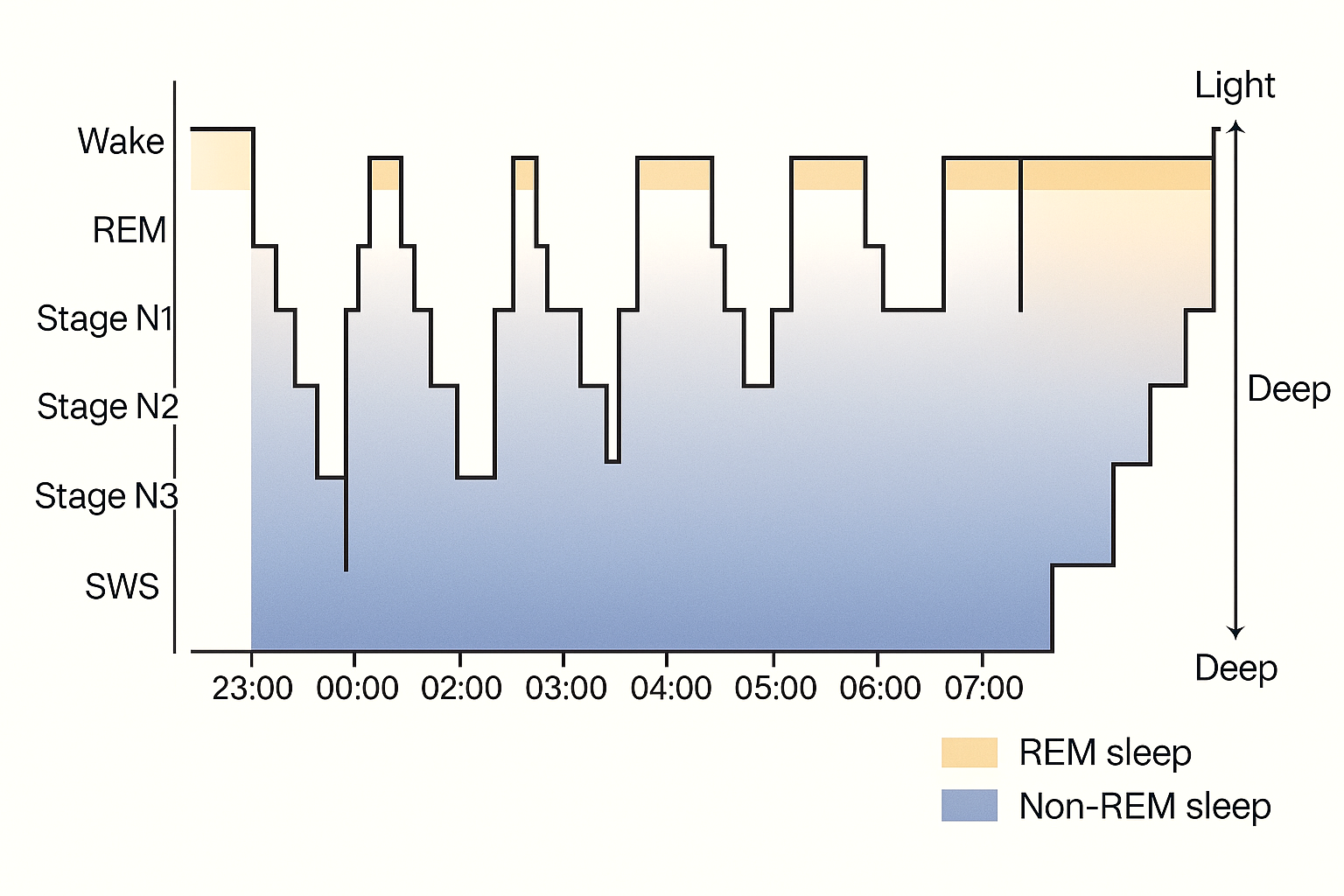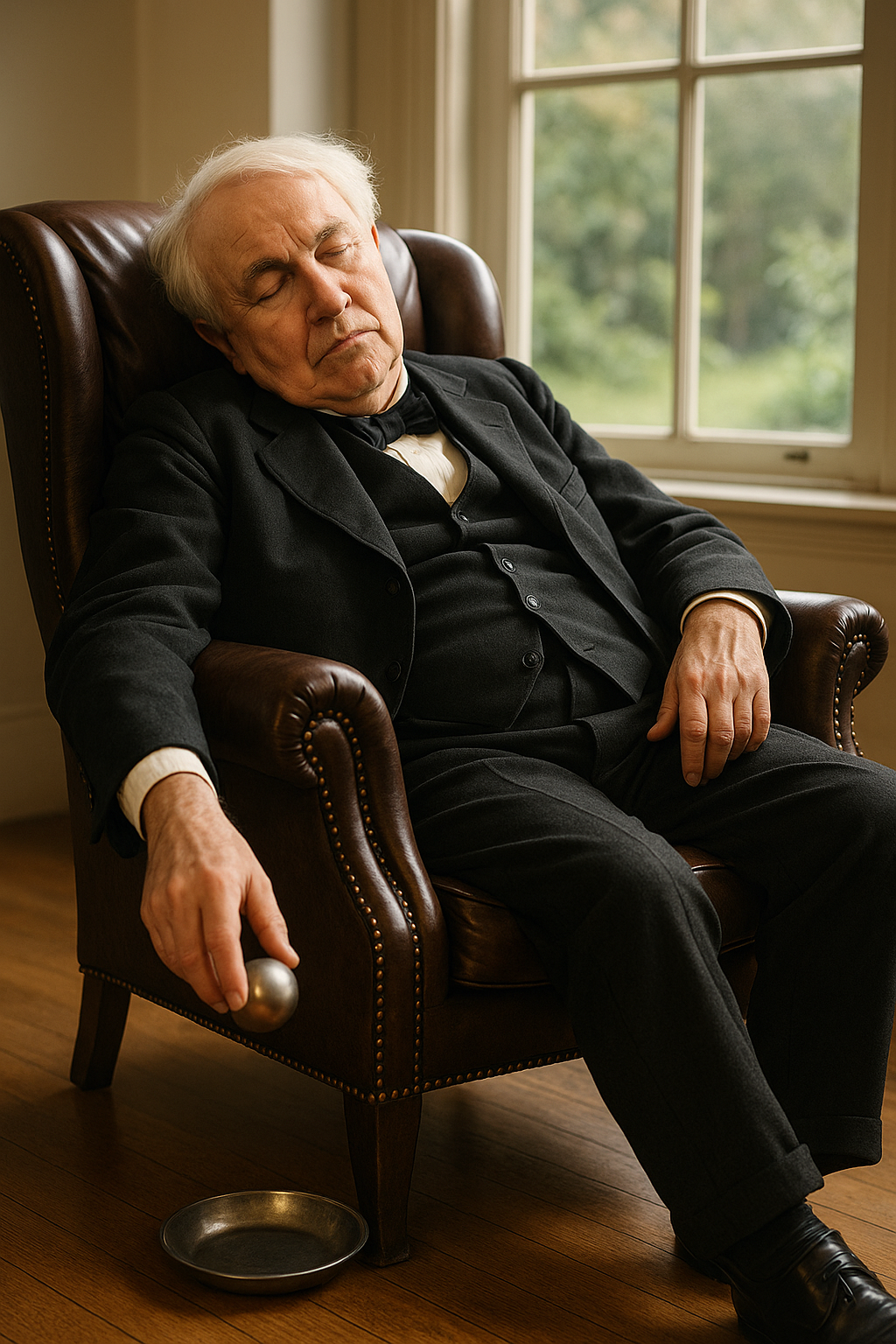The Solution that Triples Problem-Solving Ability
TL;DR
New evidence shows that naps, particularly those including N2-stage sleep, can sharpen reaction time, strengthen memory, and make leaders up to three times more likely to generate creative breakthroughs [PMID: 40569931]. For those under constant cognitive load, naps are best understood as a deliberate performance tool rather than an indulgence.
Why This Matters
The demands at work can be relentless. Between meetings, strategy decisions, and the day-to-day turbulence of leading a company, the quality of thinking determines outcomes as much as the quantity of work. It is tempting to sacrifice sleep in pursuit of more hours, but research consistently shows this is counterproductive. Sleep is not a passive state. It actively reorganises memory and primes the brain for new insights. For leaders whose competitive edge rests on clarity of thought and creative leaps, understanding the role of naps is essential, not a luxury.
The Unique Power of N2 Sleep
Sleep is not a uniform state. It moves through cycles that typically last 90 minutes, with each stage serving a different function for the brain and body. Understanding these stages makes clear why N2 is so important for creativity. Sleep unfolds in stages, each contributing differently to performance.
The stages of sleep.
N1 (light sleep): Often called a transitional stage, N1 occurs as we drift from wakefulness into sleep. Brain waves slow from alpha to theta frequency, muscles relax, and awareness of the external world fades. It’s easy to awaken from N1, which typically lasts just a few minutes. Its main role is transition, not deep recovery.
N2 (light-to-moderate sleep): This is where sleep deepens. N2 makes up around half of total sleep time and is identifiable by two signature features: sleep spindles and K-complexes. The spindles, brief bursts of activity around 11–16 Hz, facilitate synaptic plasticity (the brain’s ability to rewire and strengthen connections) and memory consolidation, especially for declarative memory. K-complexes help maintain sleep continuity and may further support integration of new information. N2 supports working memory, learning, and creative problem-solving.
N3 (deep slow-wave sleep): Also known as restorative or slow-wave sleep, N3 is when the body releases growth hormone, repairs tissues, and consolidates factual and spatial memories. N3 also plays a major role in glymphatic clearance, the brain’s “cleaning system” that removes metabolic waste products overnight. It is essential for immune resilience, metabolic regulation, physical recovery, and long-term learning.
REM (rapid eye movement): Characterised by vivid dreaming, REM plays a key role in emotional regulation, creativity, and connecting abstract ideas. It also helps consolidate procedural memory, such as skills or motor sequences. REM disruption is potentially linked to poor emotional resilience and impaired stress handling.
Together, these stages cycle multiple times each night. N3 and REM are critical for long-term health, but N2 is the stage most directly linked to the “aha” moments and sharper decision-making founders rely on.
Napping and the “Aha” Effect
The “aha!” effect Edison infamously used
The idea that rest fuels creativity is not new. Edison, Dalí, and Einstein all famously relied on micro-naps to access moments of clarity. What once sounded anecdotal is now supported by neuroscience. This may mean spotting a hidden pattern in financial data, reframing a negotiation strategy, or seeing a product solution others have missed.
How Nap Sleep Differs from Night Sleep
Night sleep typically cycles through 90–110 minute periods of N1, N2, N3, and REM, with deep slow-wave sleep (N3) and REM concentrated in the later part of the night. Naps, by contrast, compress this architecture into a shorter window. A study in 32 young adults with habitual short night sleep showed that 10-minute naps consisted almost entirely of light N1 and N2 sleep, with virtually no deep or REM sleep. By 30 minutes, naps contained significantly more N3, and by 60 minutes, participants obtained both slow-wave and REM sleep. The functional benefits mirrored this architecture: very short naps improved alertness but not memory; 30-minute naps enhanced memory encoding while incurring little sleep inertia; and 60-minute naps offered more comprehensive restoration but carried a greater risk of grogginess on waking [PMID: 36775965].
10-minute naps consist almost entirely of light N1 and N2 sleep, with virtually no deep or REM sleep.
What the Latest Evidence Shows
More recent research adds weight to this case. A recent study in PLOS Biology also demonstrated this clearly: participants who entered N2 sleep were almost three times more likely to solve hidden-rule problems than those who remained awake (PMID: 40569931). In other words, the brain during N2 is not resting but actively reconfiguring information, opening the door to those “aha” moments leaders rely on.
However, a previous study demonstrated that N1 sleep alone can boost creativity and insight. In a 2021 experiment, participants who drifted only into N1 were 83% more likely to solve a hidden number-sequence problem than those who stayed awake or who progressed into N2 sleep [PMID: 34878849]. This echoes the so-called Edison tactic above, where Thomas Edison used brief micro-naps to capture novel ideas before falling fully asleep.
At first glance, this appears to conflict with the new 2025 study. In reality, they complement each other: N1 sparks fresh associations, while N2 consolidates and organises memories, creating the conditions for deeper problem-solving.
A 2023 Korean study examined the effect of longer naps on working memory in 35 adults using EEG monitoring (arXiv: 2311.08703). Participants completed verbal and visuospatial memory tasks before and after a 90-minute nap. The results were striking. Accuracy improved significantly in both word-pair and picture memory tasks, and reaction times shortened across the board, suggesting greater mental agility.
The findings were nuanced. Not all domains benefited equally: spatial location memory (eg where you parked your car) actually declined after napping. Importantly, the study also revealed that high-performing individuals showed distinct patterns of deep N3 sleep, suggesting that personal physiology influences how much each person gains. This means naps are not a blanket solution but a tool that can be tuned to individual needs.
How to Use Naps Strategically
The practical question is not whether naps work, but how and when to deploy them. The evidence suggests there are two useful formats. A brief nap of 20 to 30 minutes is enough to enter light N1/N2 sleep, restoring alertness without the grogginess that can follow deeper sleep. A longer nap of around 90 minutes completes a full cycle and supports deeper consolidation of memory and creativity. Timing matters too: early afternoon aligns with the natural circadian dip and avoids interference with night sleep.
Environment also plays a role. A dark, cool, and quiet space makes it easier to fall asleep quickly, and even a reclining chair can be sufficient. Just as important is reflection afterwards. Tracking how alertness, decision speed, or creative flow feel in the hours after a nap allows leaders to calibrate the practice to their own physiology.
Key Take Away: From Indulgence to Strategy
The evidence is unequivocal: naps are not wasted time but a precision intervention for leaders under constant cognitive strain. N2 sleep strengthens the neural groundwork for creativity. Working memory and reaction time sharpen after naps, directly supporting the cognitive demands of high-stakes leadership. And while not every domain improves equally, the balance of evidence is clear: used well, naps are a lever for sustaining clarity and making better decisions under pressure. The most successful will not wait for exhaustion to dictate rest but will deliberately integrate naps into their performance system. The question is not whether naps work, but whether to treat them as part of a competitive strategy.
FAQs
How long should a nap last to improve creativity?
Evidence points to either a short nap of 20–30 minutes, which captures the benefits of N2 sleep, or a full 90-minute cycle for deeper consolidation.
Can naps replace night-time sleep?
No. While naps restore alertness and support creative insight, they cannot replicate the metabolic, hormonal, and restorative functions of consolidated 7–8 hour night sleep.
Do naps benefit all types of memory?
Not equally. Verbal and visual memory tend to improve, but spatial memory can decline. Individual responses also vary depending on sleep architecture.
Further Reading
Feriante J, Araujo JF. Physiology, REM Sleep. [Updated 2023 Feb 13]. In: StatPearls [Internet]. Treasure Island (FL): StatPearls Publishing; 2025 Jan-. Available from: https://www.ncbi.nlm.nih.gov/books/NBK531454/
Jawabri KH, Raja A. Physiology, Sleep Patterns. [Updated 2023 May 1]. In: StatPearls [Internet]. Treasure Island (FL): StatPearls Publishing; 2025 Jan-. Available from: https://www.ncbi.nlm.nih.gov/books/NBK551680/
Lacaux C, Andrillon T, Bastoul C, Idir Y, Fonteix-Galet A, Arnulf I, Oudiette D. Sleep onset is a creative sweet spot. Sci Adv. 2021 Dec 10;7(50):eabj5866. doi: 10.1126/sciadv.abj5866. Epub 2021 Dec 8. PMID: 34878849; PMCID: PMC8654287.
Leong RLF, Lau T, Dicom AR, Teo TB, Ong JL, Chee MWL. Influence of mid-afternoon nap duration and sleep parameters on memory encoding, mood, processing speed, and vigilance. Sleep. 2023 Apr 12;46(4):zsad025. doi: 10.1093/sleep/zsad025. PMID: 36775965; PMCID: PMC10091091.
Löwe AT, Petzka M, Tzegka MM, Schuck NW. N2 sleep promotes the occurrence of 'aha' moments in a perceptual insight task. PLoS Biol. 2025 Jun 26;23(6):e3003185. doi: 10.1371/journal.pbio.3003185. PMID: 40569931; PMCID: PMC12200826.
Patel AK, Reddy V, Shumway KR, et al. Physiology, Sleep Stages. [Updated 2024 Jan 26]. In: StatPearls [Internet]. Treasure Island (FL): StatPearls Publishing; 2025 Jan-. Available from: https://www.ncbi.nlm.nih.gov/books/NBK526132/
Shin GH, Kweon YS, Kwak HG and Jo HN. Impact of Nap on Performance in Different Working Memory Tasks Using EEG. 2024 12th International Winter Conference on Brain-Computer Interface (BCI), Gangwon, Korea, Republic of, 2024, pp. 1-5, doi: 10.1109/BCI60775.2024.10480510.




